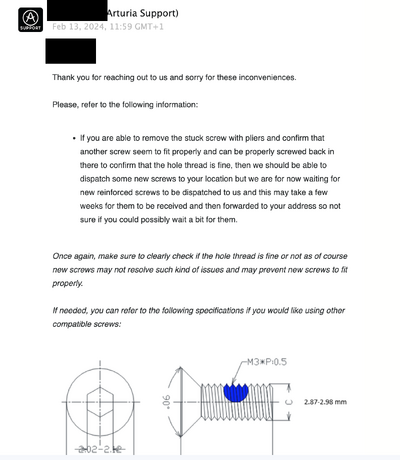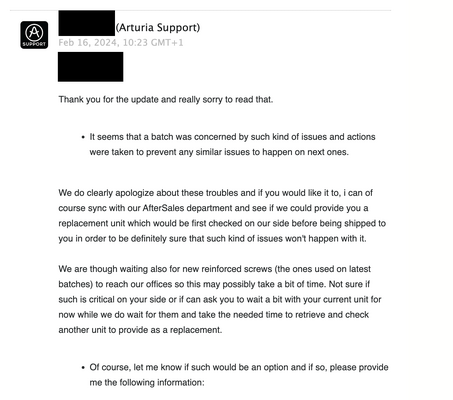Centurion
||||


Introducing the 828
MOTU is now shipping a complete redesign of its popular 828 rack-mounted (1U) audio interface for macOS, Windows and iOS. With superb analog performance driven by renowned ESS Sabre32 Ultra™ DAC technology, the 28x32 828 connects to a Mac, PC or iPad via 5 Gbps USB3 with low-latency, high-performance drivers to deliver 60 total channels of I/O and 24-channel mixing with on-board effects processing, including reverb, 4-band EQ and compression.
Front Panel
On the front panel, a large, bright 3.9-inch full-color LCD display provides 480 x 128 pixel high-resolution metering for all analog and digital I/O. Control room features include talkback with front panel "talk" button and "A/B" monitor select, mute, and sum-to-mono buttons for the main outs.Two front-panel “combo” style XLR/TRS mic/line/hi-Z guitar inputs provide advanced mic channels with cutting-edge components that deliver ultra-transparent sound with -114 dB THD+N, 118 dB dynamic range and -129 dBu EIN. Each mic channel provides individual controls for preamp gain (+74 dB), -20 dB pad, 48V phantom power, and phase invert. All settings can be controlled remotely from a computer or iOS device. Each mic channel includes a dedicated send/return insert for outboard gear processing. When nothing is connected to the front-panel mic inputs, the two rear-panel returns function as additional balanced line inputs with identical signal path characteristics as the other eight line inputs.
Additional I/O
Additional audio I/O includes 8 TRS analog (line-level) in/out, separate main outs on XLR jacks, two banks of 8-channel ADAT optical I/O, stereo RCA S/PDIF digital I/O, and two front-panel headphone outputs. The analog outputs deliver a measured dynamic range of 125 dB with -113 dB THD+N. All inputs and outputs can be calibrated with boost or trim in precise 1 dB increments. You can create completely customized mixes for each headphone output that include live 828 inputs, host computer channels and built-in reverb. All line outputs are DC-coupled, so they may be used to manipulate and sequence voltage-controlled modular synthesizers from a host DAW.Advanced Extras
Also included are MIDI In/Out jacks (with optional MIDI Thru), BNC word clock I/O (with optional Thru), and a foot switch input for hands-free punch-in during recording (or to trigger other host software keystrokes).If the 828 is connected to a computer on a Wi-Fi network, you can control everything wirelessly from the CueMix 5 app running on mobile devices or other computers on the same network — even multiple devices at the same time. You can manage access to the 828 (and other on-line MOTU devices) with network discovery features and password protection.
The 828 driver provides two loopback USB channels for live streaming and podcasting. You can easily route computer output back to the computer, where they can mix it with live 828 inputs (microphones, guitars, etc.) in their host software for live streaming or podcasting.
The 828 also supports guitar re-amping. You can connect a guitar to the front-panel input, use CueMix's near-zero latency to loop to any output (with a re-amp adapter, if needed), and record both the dry signal and a mic’d up amp simultaneously. Then the dry signal can be re-amped later with different amps and cabs — or amp modeling plug-ins — to experiment with different tones.
Included Software
The 828 includes the following software for musicians to start making music immediately: CueMix 5 app to control mixing and settings from your Mac, PC or iOS device, MOTU Performer Lite and Ableton Live Lite workstation software, 100+ instruments (in Performer Lite), and over 6 GB of included free loops, samples and one-shots from industry leading libraries.828 Feature Highlights
- Next-gen 28 x 32 USB3 audio interface with DSP, mixing and effects
- New 3.9-inch 24-bit RGB LCD with precision metering for all I/O
- Superb analog audio performance driven by ESS Sabre32 Ultra™ DAC Technology
- Ultra-low latency and proven, high-performance MOTU drivers (~2 ms RTL with a 32 sample buffer @ 96 kHz)
- Universal connectivity with 5 Gbps USB3 (compatible with USB2)
- 60 simultaneous audio channels (28 inputs and 32 outputs)
- 2x high-performance mic/line/hi-Z guitar inputs on combo XLR/TRS
- Individual preamp gain, 48V phantom power, -20 dB pad, phase invert, remote control, and dedicated inserts for each mic input
- Measured -114 dB THD+N, 118 dB dynamic range and -129 dBu EIN on mic inputs
- Flexible insert returns can operate as extra line inputs (when mic inputs are unused)
- DSP-driven 24-input digital mixer with 8 stereo busses and DSP effects (reverb, 4-band EQ, gate & compressor)
- Wi-Fi control from CueMix 5 app on multiple mobile devices (via a USB-connected computer on the same network)
- Network management features (discovery for multiple devices on the network and password protection for each device)
- Precision boost for all analog inputs and trim for all analog outputs in 1 dB increments
- Control room features include Talkback and A/B monitor select via CueMix 5 software or front panel controls
- Two flexible headphone outputs with independent volume control and fully customizable independent mixes
- 2x balanced XLR main outs
- 8x balanced, DC-coupled 1/4-inch TRS analog outputs with measured 125 dB dynamic range
- Hardware (direct) monitor mixing for each analog output pair and both headphones (8 mix busses)
- 8x balanced 1/4-inch TRS analog inputs with measured 120 dB dynamic range
- 2x banks of optical digital I/O (16 ADAT channels at 1x sample rates) with optional stereo TOSLink on Bank A
- 1x RCA S/PDIF stereo digital I/O
- MIDI in/out/thru
- Word clock in/out/thru
- Foot switch input for hands-free punch-in recording or other programmable host computer keystrokes
- DC-coupled TRS outputs can be used to control modular synthesizers from a host DAW using control voltage (CV)
- Support for 44.1 to 192 kHz sample rates
- 1-rack U form factor built with rugged steel construction
- USB audio class compliant for plug-and-play operation on macOS and iOS (no driver required)
- Driver loopback for mixing host software output with live 828 inputs for streaming and podcasting
- Guitar re-amping with near-zero loop-thru to record the dry guitar signal and mic'd amp simultaneously
- CueMix 5 app to control mixing and settings from your Mac, PC or iOS device
- MOTU Performer Lite and Ableton Live Lite workstation software included
- 100+ instruments (in Performer Lite)
- Over 6 GB of included free loops, samples and one-shots from industry leading libraries
- Two-year warranty
Bilder/Text Quelle: motu.com
1200 € beim großen T.

